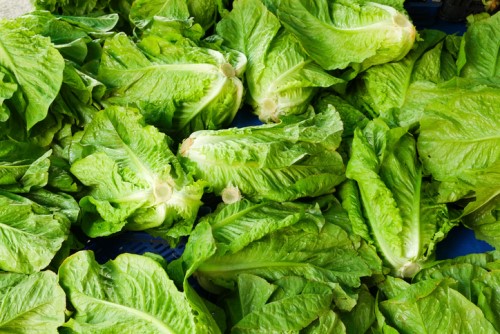

Nine Canadians have been hospitalized and 18 others declared sick with E. coli infections after potentially coming in contact with a batch of contaminated romaine lettuce that was harvested in California.
As of December 06, the Public Health Agency of Canada reported 27 confirmed cases of E. coli illness have been investigated in Ontario (4), Quebec (19), New Brunswick (1), and British Columbia (3). Individuals became sick between mid-October and early November and most reported eating romaine lettuce before their illnesses occurred. Across the border, the US has seen 52 cases in 15 states, with 19 hospitalizations.
Despite almost 30 Canadian cases, the Public Health Agency of Canada has not issued a product recall. Rather, it continues to advise residents in the affected provinces of Ontario, Quebec and New Brunswick to avoid eating romaine lettuce and salad mixes containing romaine lettuce, unless consumers can identify that the romaine lettuce being purchased did not come from an affected growing region in California, which has been outlined by the US Food and Drug Administration.
On November 21, Global News reported that three major grocery chains – Loblaw, Sobeys and Metro – were temporarily pulling romaine lettuce from their Canadian stores to avoid contamination claims. Likewise, some restaurants and establishments that serve food have chosen to avoid the risk by pulling romaine lettuce from their menus.
Restaurants in Canada can protect themselves against financial loss and reputational harm as a result of a contaminated product by purchasing a restaurant contamination insurance policy. Patricia Sheridan, CIP – manager, Toronto property & casualty, Burns & Wilcox Canada, spoke exclusively to Insurance Business about how the unique specialty coverage fills a protection gap between standard commercial general liability insurance and property insurance policies.
“If a small restaurant serves a salad that contains contaminated lettuce and a customer becomes sick as a result of eating that salad, the customer could then sue that restaurant. The sickness would be considered bodily injury and so the restaurant could get coverage from its commercial general liability policy,” she said. “Where we’ve identified a gap in coverage is if a restaurant has to close down for a period of time because it has been involved in several repeat cases where customers have become sick.
“The Burns & Wilcox restaurant contamination insurance policy covers the business interruption for cases like that, as well as the clean-up costs, recovery costs and extra expenses, such as brand rehabilitation, following the contamination. It’s a first-party coverage that fills a protection gap between a regular commercial general liability policy and a property policy.”
Burns & Wilcox Canada introduced the restaurant contamination insurance policy in the summer of 2018. It targets small, independent businesses, offering average annual premiums from $300-$500 and limits of $500,000 or $1 million. As Sheridan pointed out, it could be “extremely detrimental” for a small restaurant to close for a few weeks because of a contamination, especially if they have expenses, like clean-up costs or brand rehabilitation costs, which aren’t covered by their regular commercial insurance policies.
“Brokers should work with insureds to ensure proper protection and avoid gaps in standard commercial general liability and property policies. A lot of people believe they have coverage for business interruption as a result of a contamination, but that’s not the case,” Sheridan added. “While restaurant owners are covered for the bodily injury portion under their commercial general liability policy, and property damage is covered under their property policy, if a restaurant’s produce is contaminated by E. coli, the clean-up costs pre- and post-incident would not be covered, and neither would the business interruption because there has to be a physical property loss in order for that coverage to be triggered.”
In this current case of romaine lettuce contamination, a small Canadian restaurant having to throw away a few heads of lettuce probably wouldn’t trigger any insurance policies. They can simply toss the lettuce away without incurring significant costs that would go beyond a deductible. However, if they accidentally served contaminated produce and caused a number of illnesses, this is where restaurant contamination insurance can play an important role.
